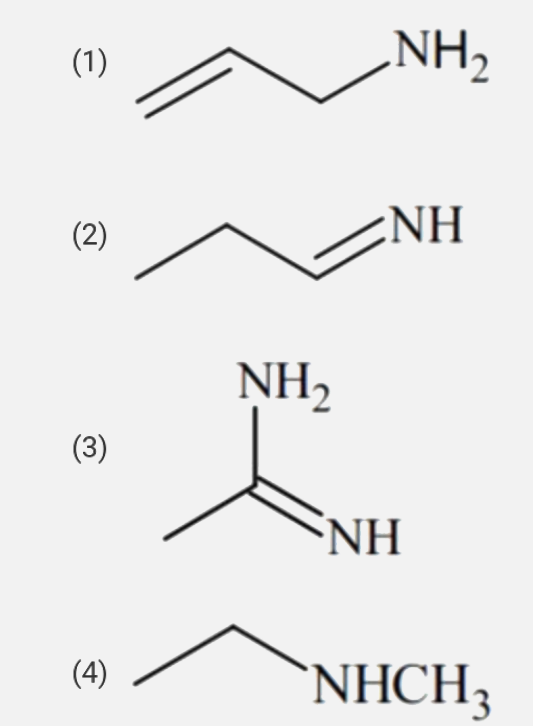Increasing order of density is
Li<K<Na<Rb<Cs
Li<Na<K<Rb<Cs
Li<Na<K<Cs<Rb
K<Li<Na<RB<Cs
The correct Answer is:A
To determine the increasing order of density for the alkali metals, we can follow these steps:
1. Understanding Density:
Density is defined as mass per unit volume. In the context of elements, we can express density (D) as:
D=Atomic MassAtomic Volume
Since atomic volume is related to atomic size, we can also say:
D=Atomic MassSize
2. Analyzing Alkali Metals:
The alkali metals (Group 1 elements) include Lithium (Li), Sodium (Na), Potassium (K), Rubidium (Rb), and Cesium (Cs). As we move down the group, both atomic mass and atomic size increase.
3. Trends in Atomic Mass and Size:
- Atomic Mass: Increases down the group (Li < Na < K < Rb < Cs).
- Atomic Size: Also increases down the group (Li < Na < K < Rb < Cs).
4. Comparing Mass and Size:
Although both mass and size increase down the group, the increase in atomic mass is more significant than the increase in atomic size. This means that the density will generally increase down the group.
5. Special Case of Potassium:
However, it is important to note that between Sodium (Na) and Potassium (K), Potassium has a larger atomic size which leads to a lower density compared to Sodium. Therefore, even though Potassium has a higher atomic mass, its density is lower than that of Sodium.
6. Establishing the Order:
Considering the above points, the increasing order of density for the alkali metals is:
Li<K<Na<Rb<Cs
Final Answer:
The increasing order of density is:
Li<K<Na<Rb<Cs
Density is defined as mass per unit volume. In the context of elements, we can express density (D) as:
D=Atomic MassAtomic Volume
Since atomic volume is related to atomic size, we can also say:
D=Atomic MassSize
The alkali metals (Group 1 elements) include Lithium (Li), Sodium (Na), Potassium (K), Rubidium (Rb), and Cesium (Cs). As we move down the group, both atomic mass and atomic size increase.
- Atomic Mass: Increases down the group (Li < Na < K < Rb < Cs).
- Atomic Size: Also increases down the group (Li < Na < K < Rb < Cs).
Although both mass and size increase down the group, the increase in atomic mass is more significant than the increase in atomic size. This means that the density will generally increase down the group.
However, it is important to note that between Sodium (Na) and Potassium (K), Potassium has a larger atomic size which leads to a lower density compared to Sodium. Therefore, even though Potassium has a higher atomic mass, its density is lower than that of Sodium.
Considering the above points, the increasing order of density for the alkali metals is:
Li<K<Na<Rb<Cs
The increasing order of density is:
Li<K<Na<Rb<Cs
Similar Questions
Knowledge Check
- Question 1 - Select One
Choose the correct increasing order of density of the following compounds.
AC3H7Cl<C3H7i<CH2Cl2<Cl2BC3H7I<C3H7Cl<CH2CL2<Cl4CC3H7i<C3H7Cl<Cl4<CH2Cl2DCCl34<CH2Cl2<C3H7i<C3H7Cl - Question 2 - Select One
Arrange the following in increasing order of basicity :
 AS<Q<R<PBS<Q<P<RCS<R<P<QDP<Q<R<S
AS<Q<R<PBS<Q<P<RCS<R<P<QDP<Q<R<S
The correct order of increasing order of size is
View SolutionThe increasing order of basicity of the following compounds is
 View Solution
View SolutionArrange the following comounds in the increasing order densities.
 View Solution
View SolutionCorrect order of density is-
View SolutionArrange the following compounds in the increasing order of their densities.
 View Solution
View SolutionArrange the alkali metals in increasing order of their density.
View Solution

